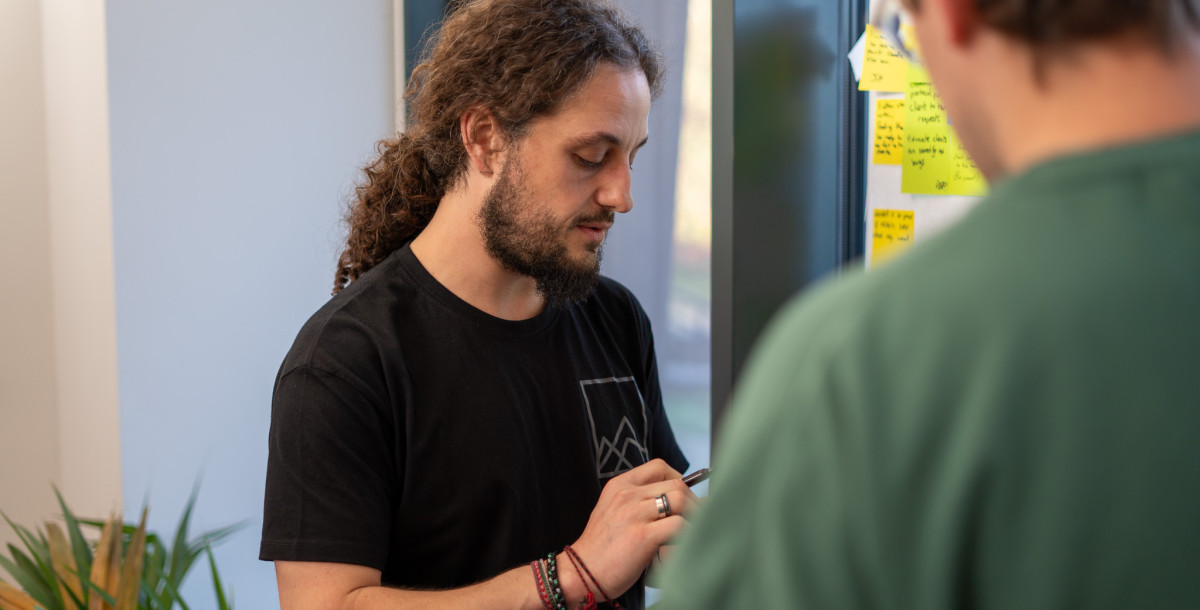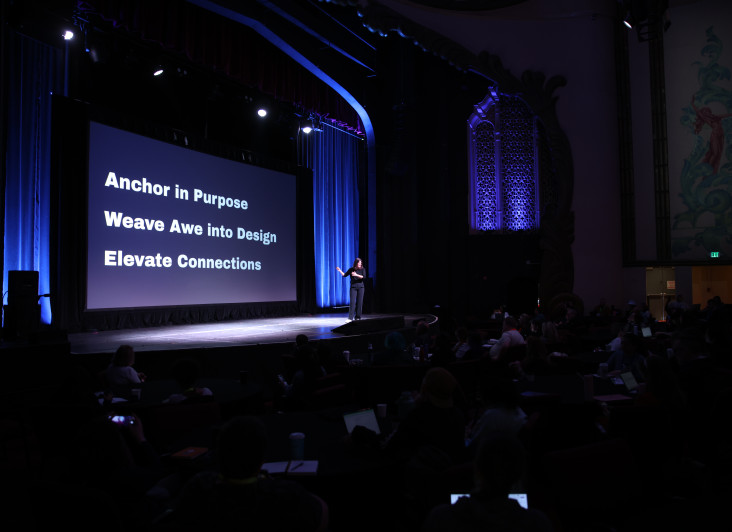How to turn community feedback into positive action

We don’t need to tell you the benefits of getting feedback. After all, 40% of organisations use online communities to gather feedback.
But gathering feedback is only half the battle—the real challenge lies in turning feedback into actionable steps.
Maybe you’re collecting member feedback to improve a product or service that your company offers. Or perhaps you’re looking for insight into the community space itself and want to understand how your community can be more in tune with its members.
This article will focus on the latter, looking at how actionable feedback can improve the community experience and member satisfaction.
Collecting actionable feedback
A Microsoft survey found only 41% of UK respondents believe brands take action on customer feedback, with the rest (59%) believing no action is taken on their suggestions. So, the first step is ensuring that any feedback you collect from your members is, in fact, actionable.
Vague comments like ‘the platform is confusing’ or ‘I like the community’ don’t provide enough information for community managers to make meaningful changes.
To avoid this, focus on gathering feedback that’s specific and constructive.
Our top tips are:
1. Ask targeted questions
Direct questions encourage detailed responses. Instead of asking, ‘How do you feel about the community?’, try asking, ‘Which specific community features do you find easy or difficult to navigate?’
2. Use structured surveys
While open-ended questions provide valuable insights, structured surveys with multiple-choice or rating scale questions can help pinpoint areas of concern. This allows you to identify trends and patterns that are easier to act upon.
3. Collect feedback across channels
Remember, community is everywhere, and people engage differently across multiple platforms. Gather feedback from all relevant sources—surveys, community forums, social media—to get a more comprehensive view of what members experience in your community.
When your feedback is intentional and detailed, you’ll be equipped with actionable insights rather than vague opinions, making the next steps clearer and more manageable.

Prioritising feedback
Once feedback is collected, the next challenge is knowing what to act on first.
Not all feedback can or should be implemented immediately. Prioritising feedback based on your community's goals and available resources ensures that the most impactful changes are made.
Start by grouping feedback into categories, for example:
Community experience
Technical issues
Event suggestions
This helps identify the areas that need attention and gives structure to your feedback analysis and implementation plans.
Keep an eye out for multiple community members highlighting the same or similar issue. When this happens, it strongly suggests you should direct your attention to that particular concern as a matter of urgency. Feedback patterns are helpful for pinpointing problems that may affect a large percentage of your community.
Knowing what feedback aligns with your community’s short-term and long-term goals can also help you prioritise. Let’s say your online community’s primary goal is to increase member retention. When you’re asking for feedback, you’ll want to prioritise any member suggestions or thoughts related to onboarding or engagement strategies.
It’s important to recognise that not all feedback changes are equal. Member feedback will vary in terms of importance as well as the resources needed to address the matter. You’ll find some suggestions require significant time or a bigger budget to complete.
Weigh the potential impact of the feedback against the resources required. Start with changes that offer high impact but are relatively easy to implement in your community. That will allow you to plan for the bigger, more time-consuming improvements in future cycles.
The benefits of actioning feedback
Acting on feedback is a great way to show your community members that they’re valued and heard. When community members can see their suggestions have led to improvements, it strengthens their connection to the community and encourages them to participate regularly.
It can also lead to:
Increased member engagement
When members know their feedback is taken seriously, they’re more likely to:
Stay engaged
Contribute ideas
Participate in community activities
Active involvement helps members move up the participation ladder, and creates a more vibrant and dynamic community.
Builds trusts and loyalty
A community that listens is a community that people trust.
When members feel heard, they develop a deeper sense of loyalty to the community. This trust turns members into community ambassadors while also reducing member churn.

A more inclusive community
Acting on feedback helps create an environment where all voices matter. These varied perspectives can identify blind spots and lead to more effective decision-making for community managers and leaders.
Stronger community purpose
We spoke in a recent article about the importance of your community growing alongside its members as they develop new skills or interests.
As a community manager, you want to ensure your community continues to provide members with what they need and want. If this starts to dip, so will their interest and participation levels. Implementing feedback helps show members that your community is willing to evolve with them, encouraging long-term retention.
4 ways to track the success of feedback implementation
Measuring the impact of member feedback allows you to understand what’s working and where further adjustments are needed.
Here’s our 4-step process:
Set clear success metrics
For each change you make in your online community, identify KPIs that will help you measure its success. For example, if you improve the onboarding process based on feedback, track whether the retention rate of new members increases as a result.
Monitor engagement and member satisfaction
The hope with all feedback implementation is that it makes for a happier community. The best way to see if this works is to monitor how engagement levels change and whether community satisfaction improves.
Follow-up surveys or informal polls can help gauge whether the community appreciates the changes made.
Post-implementation feedback
Feedback about feedback might seem like a lot, but it’s highly beneficial. Ask your community to provide feedback on the changes that have been made. Did the new features solve their problem? Is the new process more efficient? Post-implementation feedback will help you refine your actions and continue improving.
Review and repeat
Feedback implementation should be part of an ongoing cycle. Regularly review the impact of changes and be prepared to adapt based on new feedback. Doing so ensures continuous improvement to your community while keeping you aligned and aware of members’ evolving needs.
Improving your online community
Whatever your reasons for gathering feedback, what’s important is how you use it. Turning feedback into action is a great way to keep your community engaged and growing.
At Steadfast Collective, we’re passionate about helping your community members engage and participate. If you’re looking to build an app or website that’s community-first, get in touch!
More Articles

Can you track it?
Every budget is being put under the microscope right now, and quite right too.

When to Build Your Own Membership Platform (and When Not To)
I’ll let you in on a secret, not every membership organisation needs a bespoke membership platform.

Design for AWE
Anchor. Wonder. Connection. The blueprint for unforgettable memberships.

